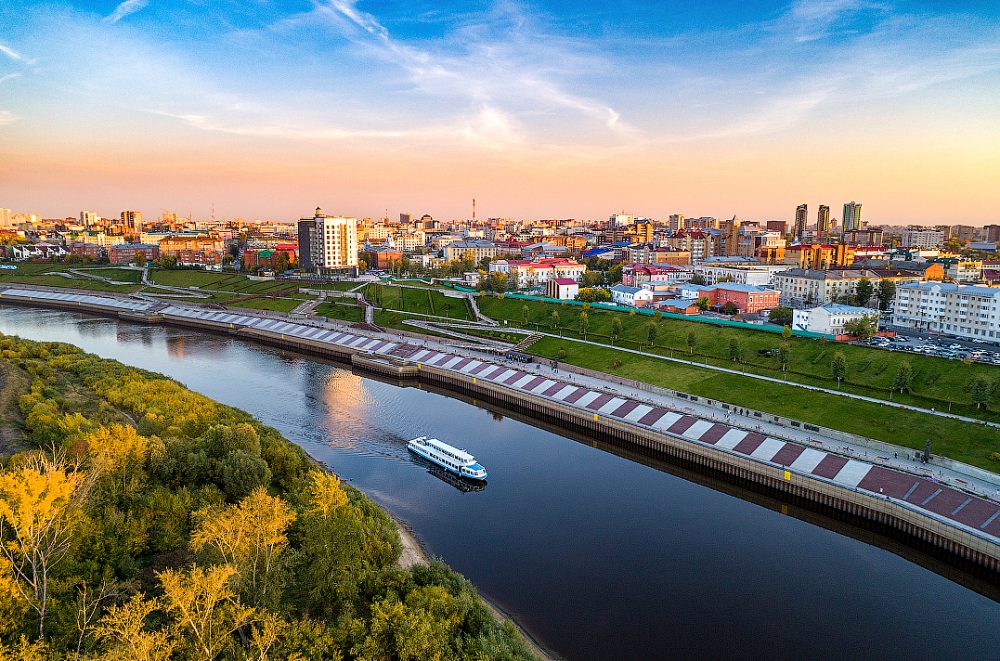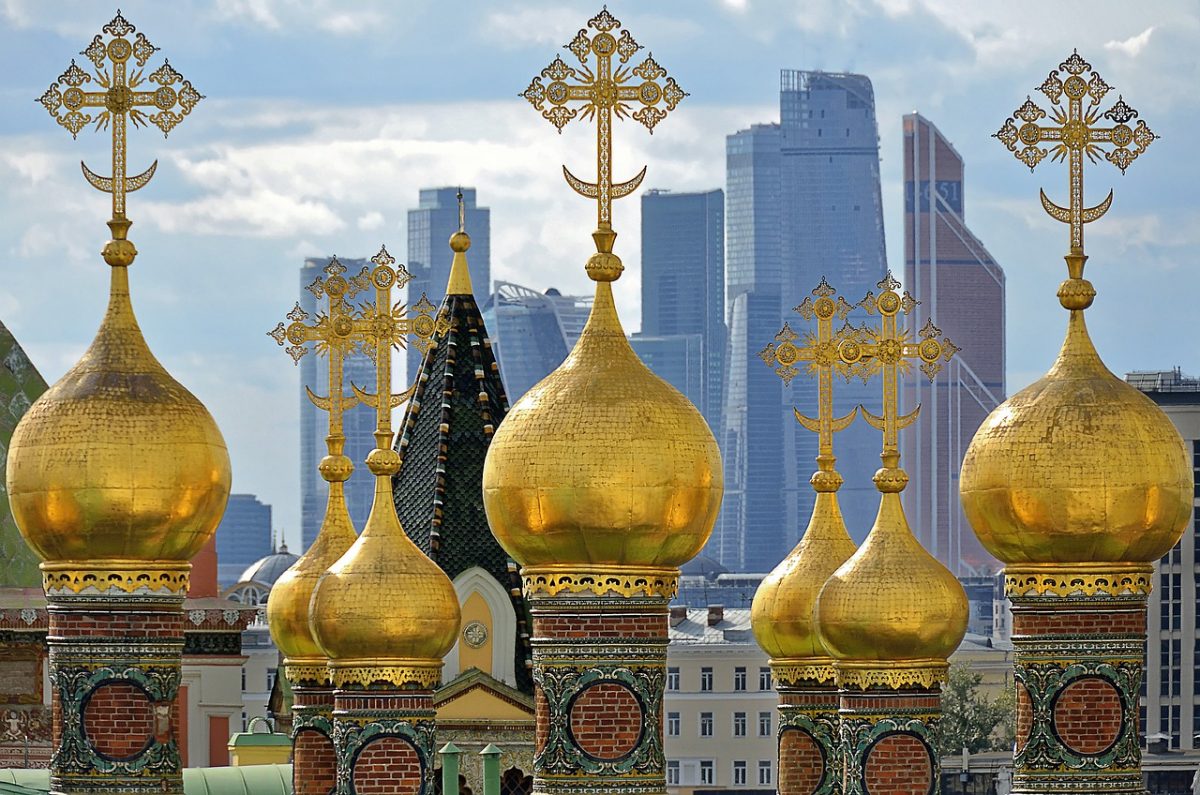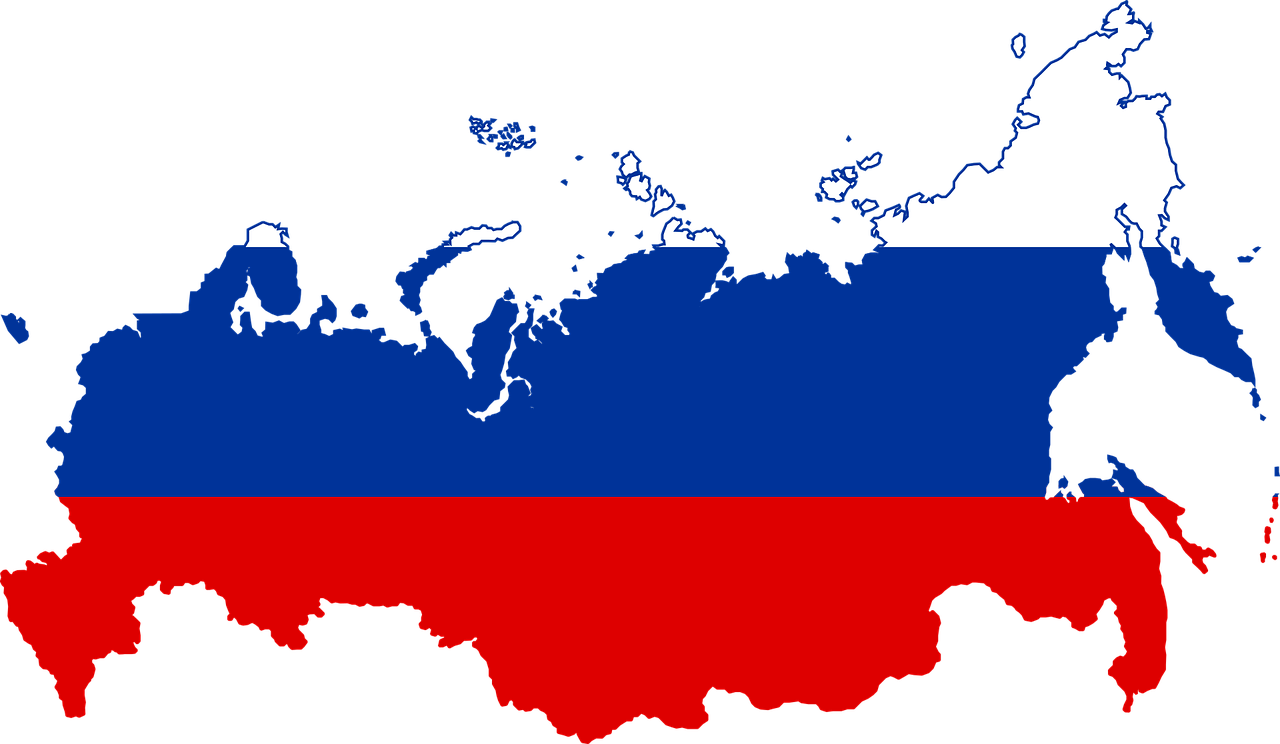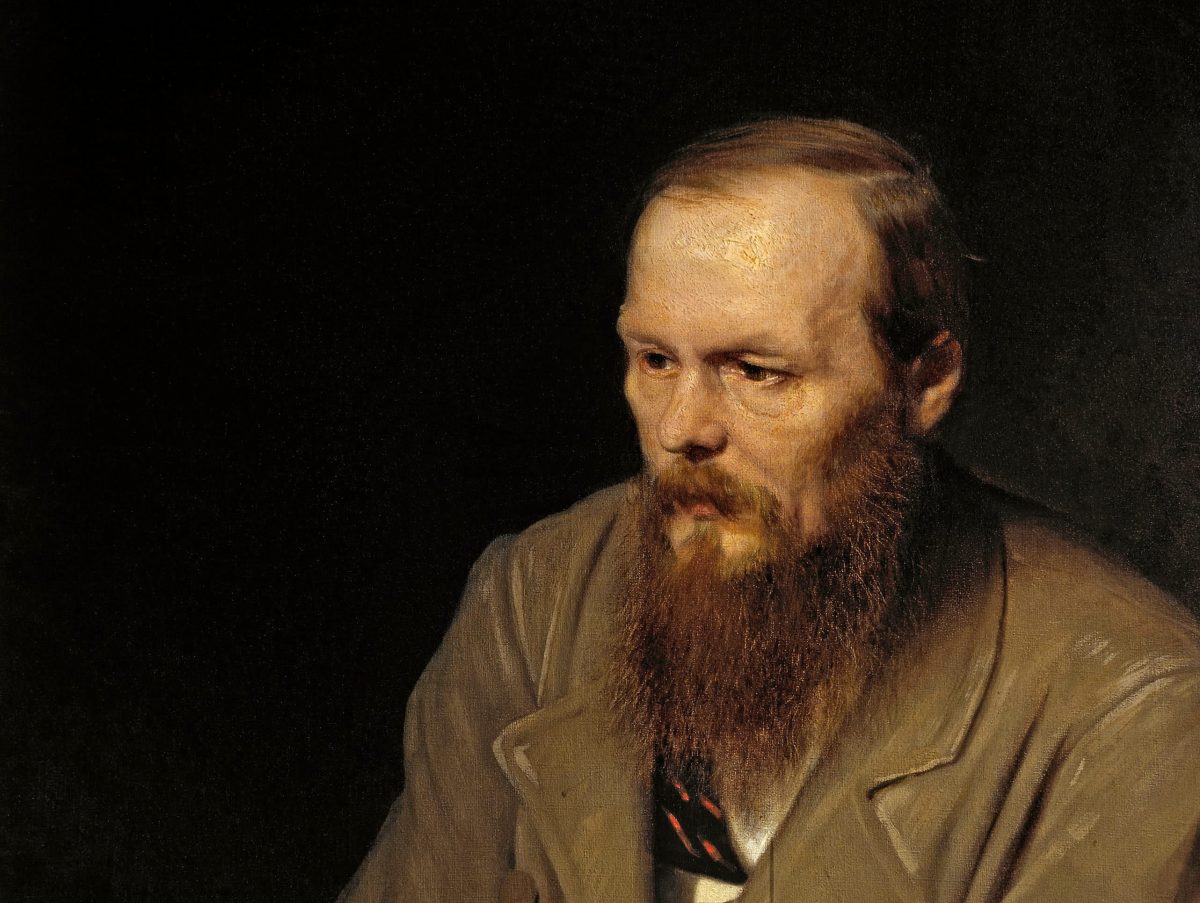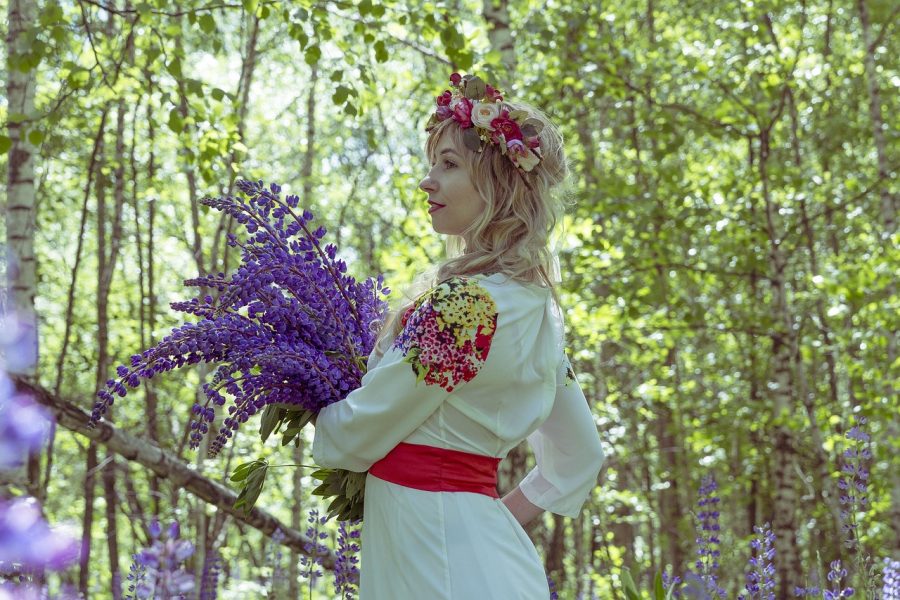The first Siberian city was founded in 1586. Tyumen has been unofficially titled the oil and gas capital of Russia. The city’s population is 707 000 people, which continues to increase. According to RBC Holding, Tyumen is one of ten the most quick-growing towns in Russia. Don’t let the mention of oil-hungry businesspeople leave you thinking this is a dull, money-focused city, though. The city has a buzzing street life in summer and a couple of worthwhile sights that, taken together, will keep you entertained for a day or so.
Tyumen is also the stepping stone to the gorgeous old town of Tobolsk, a few hours’ bus or train ride away. Tyumen is a cultural, business, educational and administrative center of the Tyumen region. Most of the city’s population comprises young people under 35.
Here are always places to go in the evening and to see during weekends. Cozy cafes, luxurious restaurants, the best theatres and philharmonic concert hall, and museums reminding about the rich history of the city — all that is Tyumen. These are the best places to see in Tyumen, Russia.
1. Tyumen’s Holy Trinity Monastery
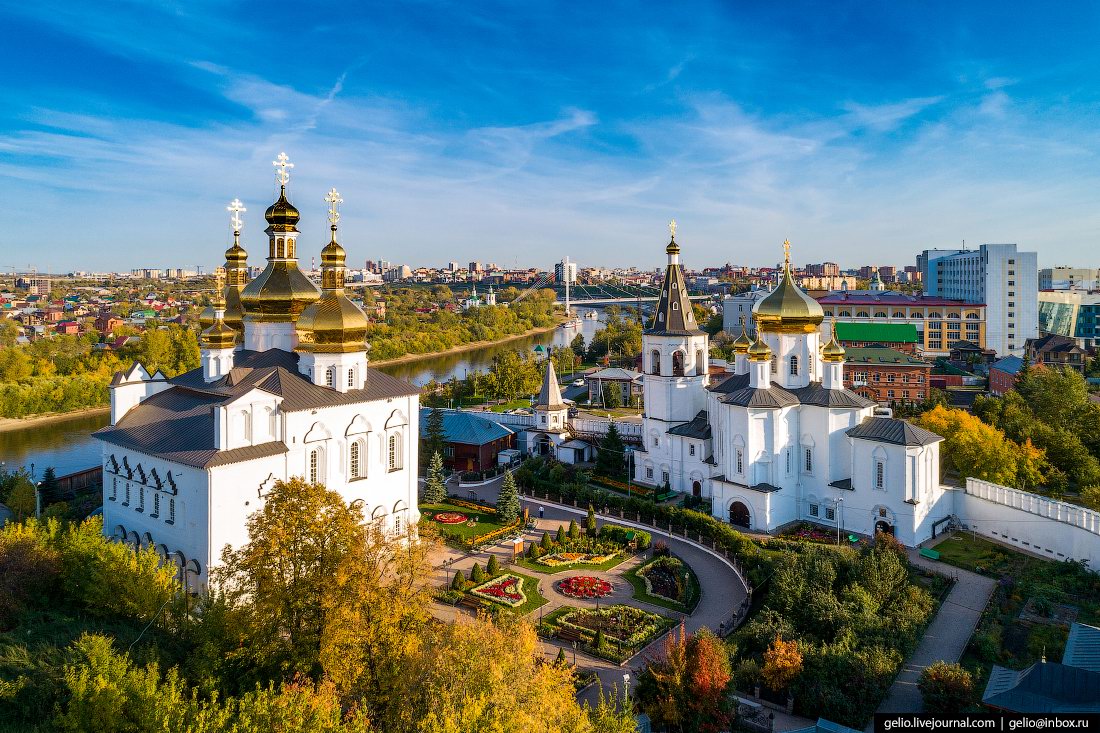
Tyumen’s Holy Trinity Monastery is located in the historical center of Tyumen. It is just a few minutes walk from the Tura Embankment. The monastery was founded on the picturesque bank of the Tura River in 1616. Almost a century later, in 1708, the old wooden monastery was rebuilt with stone. Shortly after, the monastery was named Holy Trinity. The building process was conducted under the leadership of metropolitan Philophey Leschinsky. Later, he took monastic vows and lived in seclusion for the rest of his life. After he died in 1727, he was buried at the monastery’s entrance.
During the Soviet period, the monastery was used as a dormitory for a military platoon and the headquarters of the city’s water control system. The monastery was returned to the Tyumen diocese in 1995, but the first service was not held there until 2003. In 2005 the relic of prelate Philophey was uncovered and is now kept in the Peter and Paul Cathedral monastery. In 2007 a square was dedicated to Philophey near the monastery. Today Holy Trinity Monastery is open for everyone to see and tour while it continues to hold regular liturgical services.
2. Znamensky Cathedral
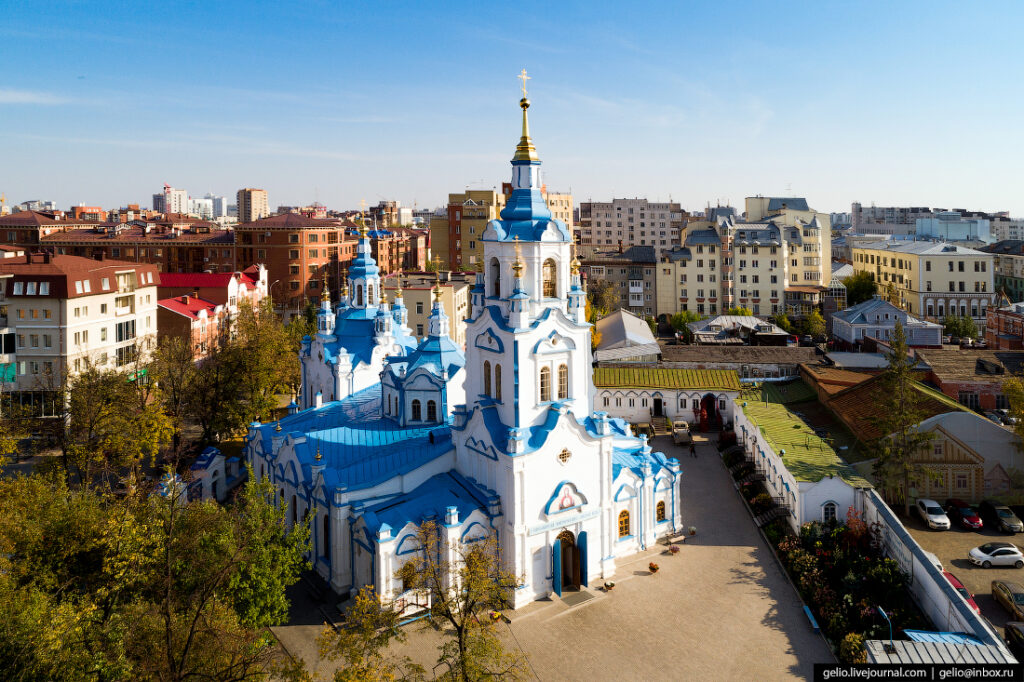
The history of Znamensky Cathedral found its roots in the first half of the 17th century, when a small wooden chapel was first erected at the site of the current Cathedral. The old wooden chapel was replaced with the construction of a stone church which began on September 1st, 1768. The church’s previous name was given in honor of Mary, the Mother of God, and her icon within the church. The building was dedicated only 33 years later, in 1801. The church’s first stone building was painted white and consisted of the main chapel, a bell tower, a refectory, and a porch.
After the Revolution of 1917, the Cathedral was used as a transit prison. Still, between 1933 and 1941, the church was returned to the diocese. With the beginning of World War II, however, it was again taken over and used to house dislocated army forces. Finally, the Cathedral was returned to the eparchy. On June 19th, 1994, the clergy held a liturgical service for the first time. Today Znamensky Cathedral is a functioning church and one of the most beautiful symbols of Tyumen.
3. Tyumen Bolshoi Drama Theater
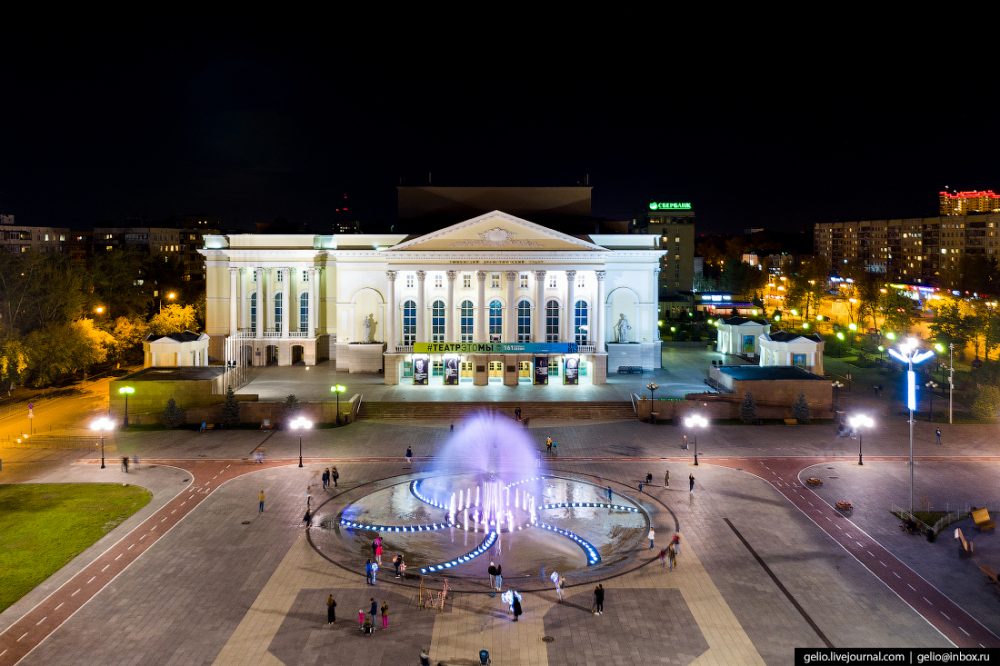
In 2008, The Tyumen Bolshoi Drama Theater got a new building built in record time for one year and eight months. With a 158-year history, the theater is the most prominent Drama Theater in Russia. The history of the Tyumen theater began even before the first building. It is known that in 1858 the St. Petersburg guest expressed his admiration for Amateur performances.
This fact was recorded, and the city’s theatrical history was reckoned from it. History tells us that in 1890, the first Guild merchant, an honorary citizen of the municipality Tekut’ev Andrei Ivanovich, founded a permanent theatre, which entered the town history called Tekut’evsky. Andrei Ivanovich, in love with the spectacle of dramatic scenes, supported theatre for 26 years.
In 1916, before his death, he bequeathed the theatre to the city. The City Council accepted the gift, and newspaper announcements began to inform about the performances not in the Tekut’ev’s theater but in the city theatre named Tekut’ev. After the October revolution, the theatre received the name of V. I. Lenin.
Under the leadership of the Petrograd director Valmar, it was staged such performances as “Idiot”, “the Power of Darkness”, “the Living corpse”, and “the Day”. In subsequent years the core of the repertoire included Russian and foreign classics, the best works of modern drama.
4. Saint George Ascension church

Through the parishioners’ efforts, this church was erected on the Tura River’s left bank. The church began as a stone two-storied building with a bell tower and two thrones: one is on the first floor in honor of Saint George and the other in honor of the Ascension of God is on the second.
After the October Revolution in 1929, the church was closed, and a workshop of tanners and chemists used its building. In 1934-35 the church became a dormitory for driving school students and combined operators. Later the building was under the governance of Tuymen’s fur coat fabric company.
Only in 1996 was the building returned to the diocese of Tobolsk and Tyumen. Two years later, services were resumed there. Step by step, in 2005, the bell tower was restored. In 2006, the church participated in the government program entitled “Cultural memorials restoration.” Now it is a functioning church that adorns the historical center of Tyumen.
5. Church of the Saviour
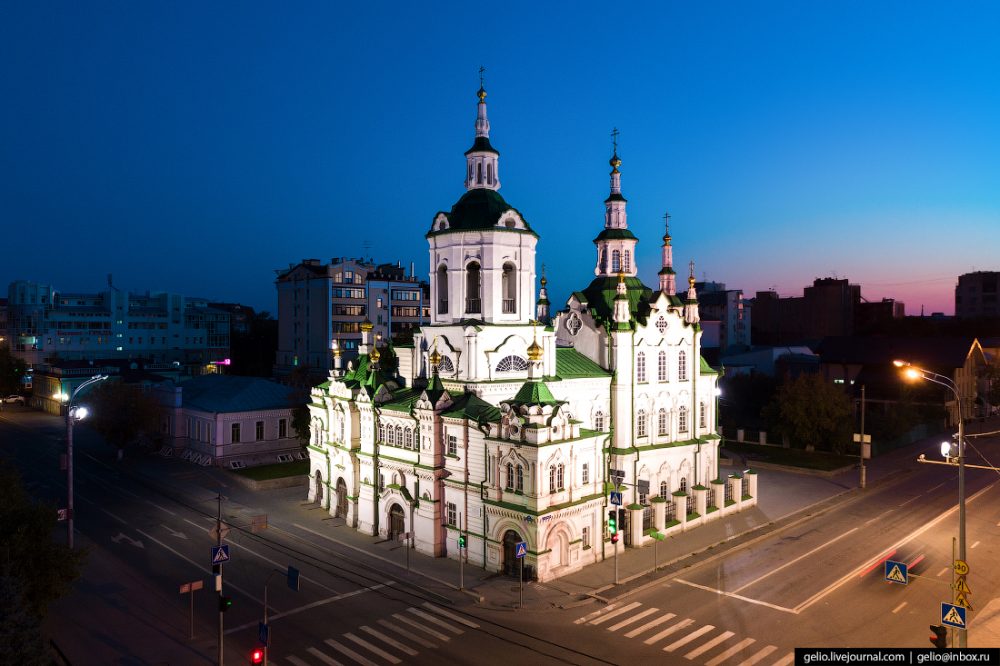
The Church of the Saviour, also known as the Church of the Image of “The Saviour Not Made by Hands” or shorter Spasskaya Church, is a church in Tyumen, Tyumen Oblast, Russia, located at Lenin Street, 43, at a crossroad between the Chelyuskintsev Street. Built-in a late 18th-century Siberian Baroque and early 20th-century neorussian style, the building is one of Siberia’s oldest and most expressive churches, under monument protection.
It is believed that the early wooden church was raised in 1586 and reconstructed after several fires into a stable stone building in the late 17th century. The Church of the Saviour saw another two rebuildings in the late 19th century. However, after the 1917 October Revolution, the church was subject to confiscations of its property in 1922, and in 1930 was closed and became a momentary prison.
After the failed attempt to destroy the church two years later, it has been used as an archive and a library. The building storage material for the Tyumen Local Historical Museum is expected to be returned to the local eparchy in 2019.
6. Tura Embankment
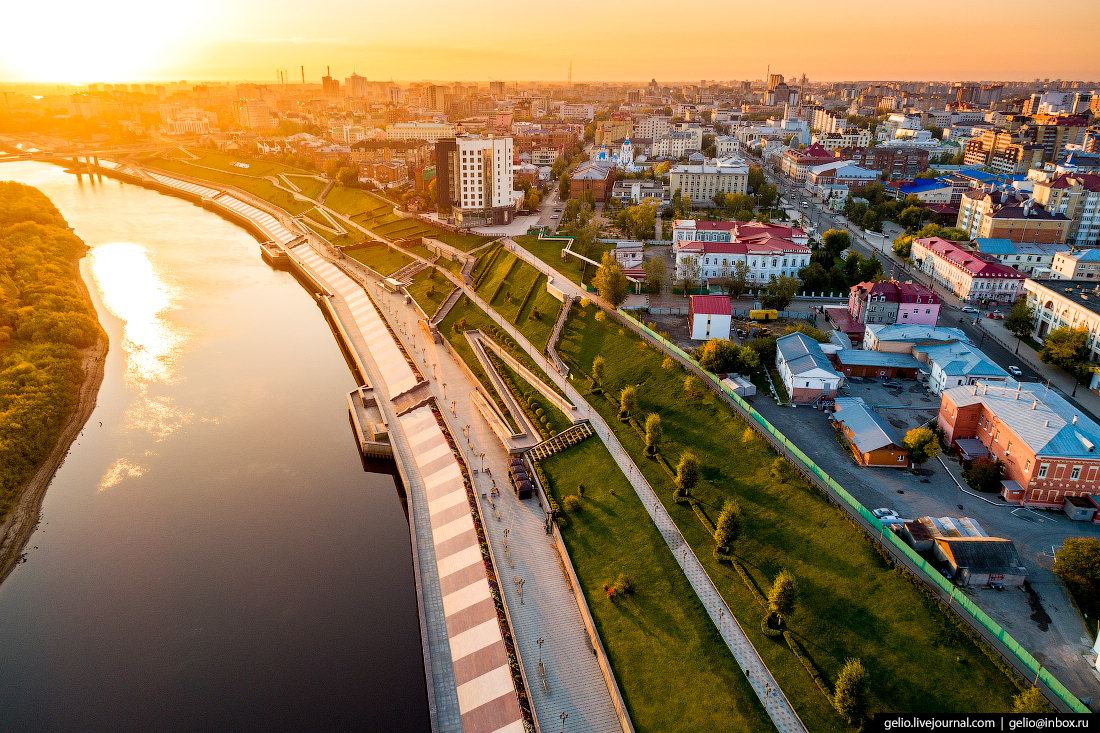
The only thing in the Russian four-level structure of this kind and one of the favorite holiday destinations among residents and visitors alike. Here, close to each other is full of the city’s attractions: Lover’s Bridge, historical area, the museum “City Council” Architecture and Construction University, and Holy Trinity Monastery. Embankment and bridge of lovers – the city card is depicted on the magnets, postcards, and other souvenirs tourists bring from Tyumen.
Construction of the promenade continues today, and it planned its expansion on both sides of the river Tura. Throughout the embankment, scattered monuments of famous people, life, and activity were somehow linked to Tyumen. Summer, early Fall, and spring – are the best time for walking and spending time on the waterfront.
It is always noisy: many people are playing songs with a guitar, working fountains, flash mobs, and holding various events, to the bridge of lovers traditionally come to the newlyweds. In the summer promenade Tours – the most popular holiday destination for residents.
7. The Lovers’ Bridge
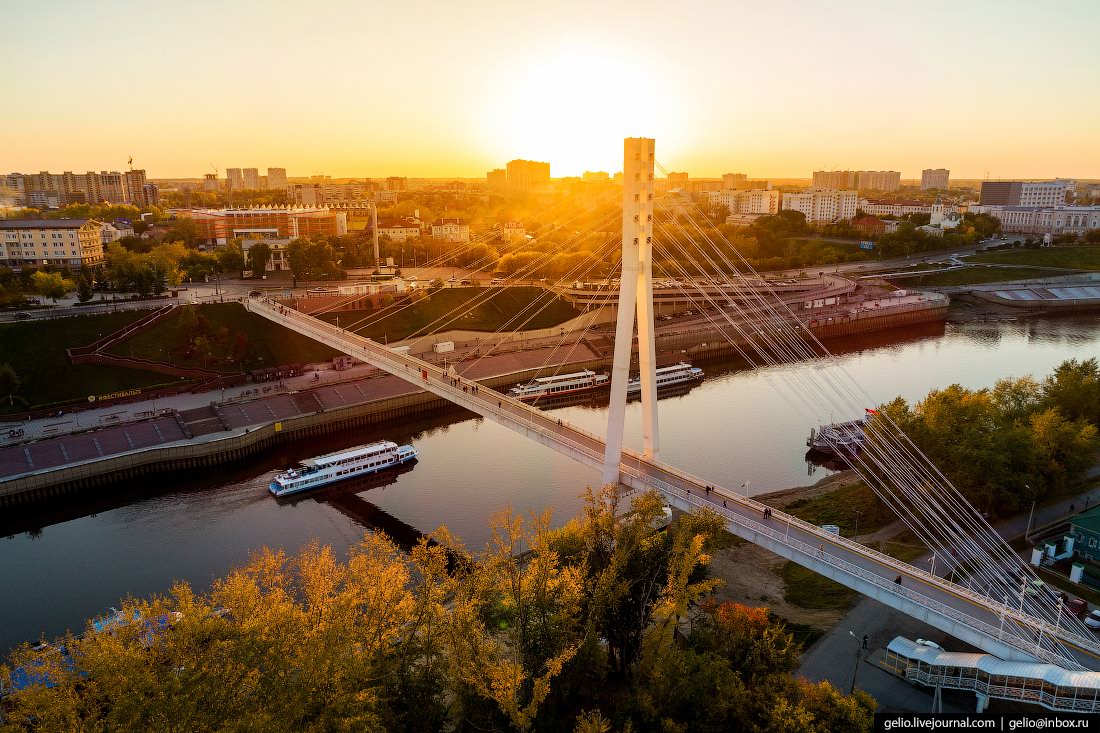
The Lovers’ Bridge is a cable-stayed bridge over the Tura River in the Central District of Tyumen. The bridge was built in 1987 – five years after the collapse of an old wooden bridge in the exact location. The last name of the bridge was Peshehodniy (Pedestrian). Still, in 2003 local DJs Maria Kondratovich and Timur Shkval arranged an unusual contest called “The most unusual kiss”.
After this event, the city mayor Stepan Kirichuk offered to rename the bridge the Lovers’ Bridge. Then, on July 26th, newly married couples, the director of the Red Army Radio Station V. Bogodelov, and the city’s mayor performed an official ribbon-cutting ceremony to commemorate the bridge.
8. Kolokolnikovs Estate Museum
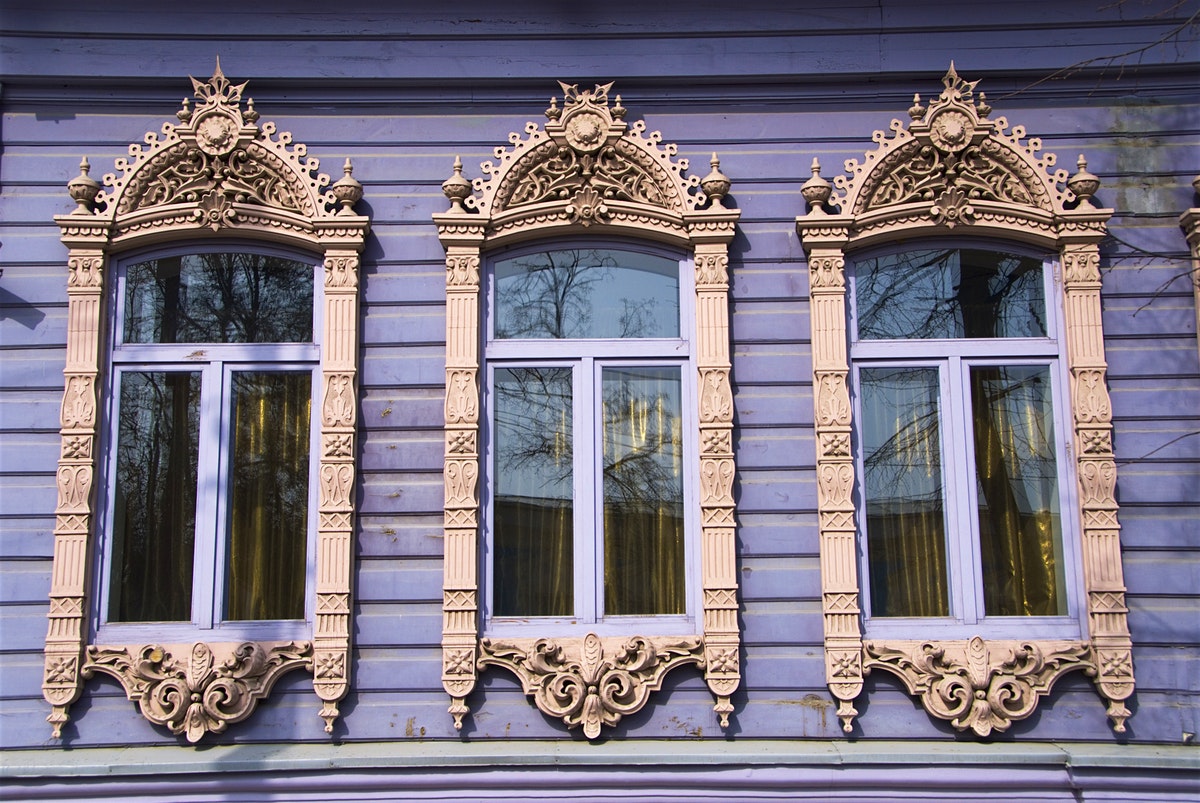
The Kolokolnikovs Estate Museum is the only remaining classical merchant’s estate in Tyumen. The building’s facade combines classical and baroque architecture elements and traditional Siberian carving. The doors open to a luxurious, brightly lit hall with lofted ceilings and walls decorated with vivid paintings of the Kolokolnikovs family.
One painting depicts an old trade shop, representing the collective image of the city’s shops. Stepping through the doors of the Kolokolnikovs Estate transports one back to the unique atmosphere of the late 19th and early 20th centuries.
The permanent exhibit of the Kolokolnikovs Estate Museum is called “The History of the House”. It is dedicated to the history of the merchant families, such as the Ikonnikovs and the Kolokolnikovs. The exhibit will also explain the historical events in this house, one of which was the monumental meeting between the future Emperor Alexander II and the great Russian poet V. Zhukovsky in 1837. In 1919 the estate was used as the headquarters of Marshal V. Blyukher.
9. Gorodskaya Duma Museum
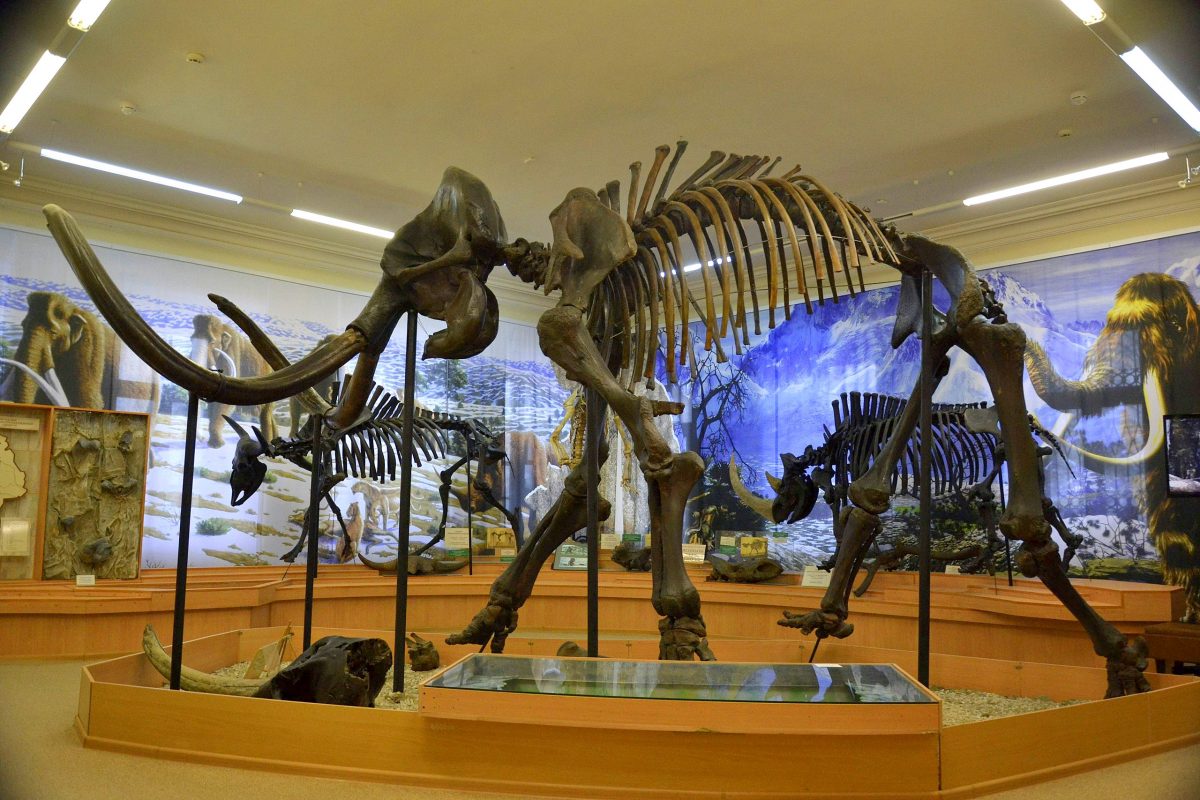
The building of the Tyumen regional Museum of Local Lore Gorodskaya Duma was built in the second half of the XIX century. It is a magnificent example of Russian provincial architecture. The high ladder and a stepped attic give the museum its slenderness, combined with a Corinthian portico and massive columns — the traditional buildings of public institutions and architectural elements.
The Window into the nature constant exhibition introduces the variety of Flora and Fauna of the Tyumen region and its ancient inhabitants. An integral part of the museum is a small paleontological Museum. The skeleton’s collection of mammoth, fossil bison, woolly rhinoceros, and cave bears is presented at the museum. In addition, visitors can get acquainted with the Botanical, Zoological, and entomological collections.
10. House Masharova Museum
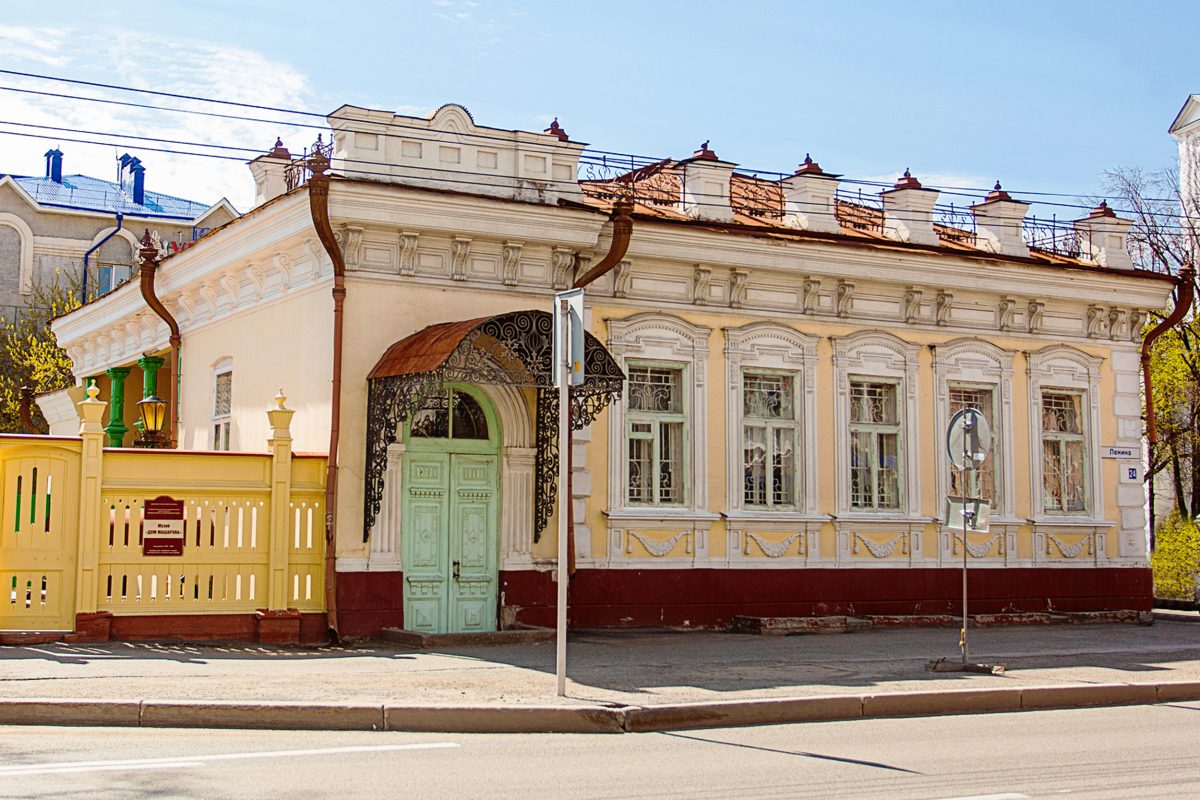
The House Masharova Museum is an old house built in the neoclassical style and previously belonged to N. Masharov, a famous manufacturer and one of the founders of the iron industry in Tyumen. The museum is a monument to late 19th and early 20th-century Siberian architecture and is renowned for its luxurious décor.
Traditional musical events and temporary exhibitions are regularly organized in the House Masharova Museum. They take place in the chamber-like atmosphere of the welcoming hall of the merchant’s house.
The permanent exhibition called the Family Book tells the tale of the family’s life at the end of the 19th century. During a tour of the house built, you will see many authentic items of a past era and discover the etiquette of a traditional family from Tyumen.
11. Alexandrovsky Garden
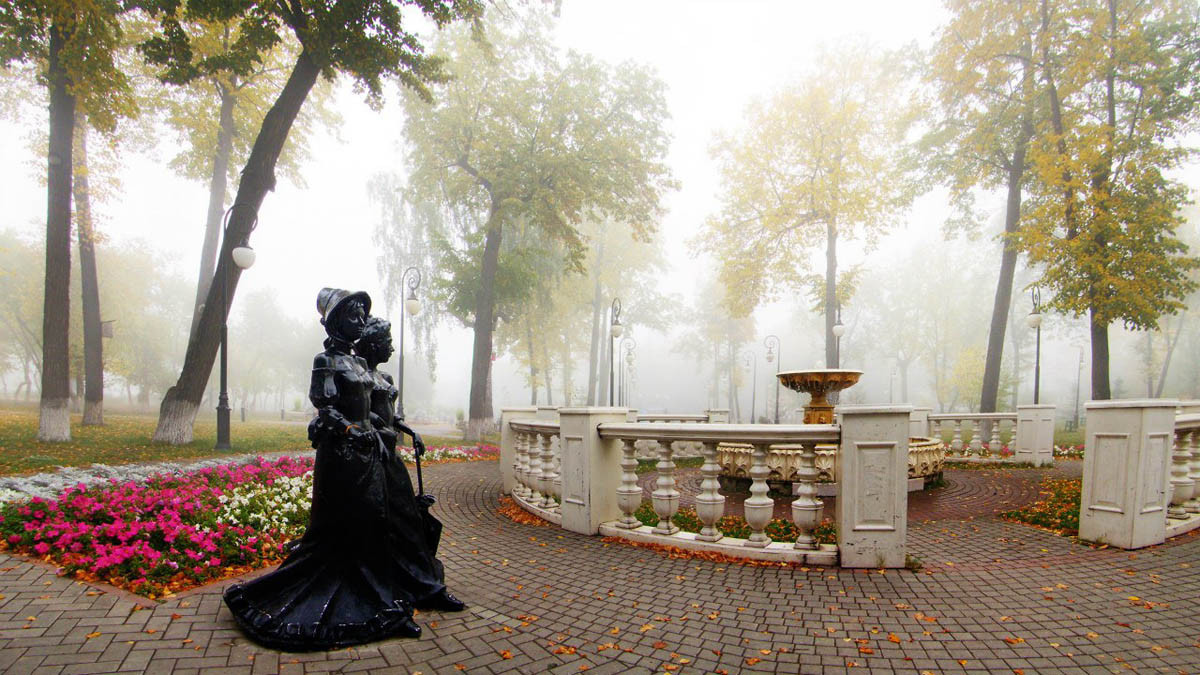
The original name of the Alexandrovsky Garden is the Country Garden. The garden appeared on a vacant plot of land in 1851 when thousands of linden, birch, spruce, and pine trees were planted in the area of about 100 acres (40 000 m²) with the money of the merchant Ivan Ikonnikov.
The garden was named after the crown prince Alexander, the future Tsar Alexander II, who visited Tyumen on May 31st, 1837, during his journey through Siberia. After the October Revolution of 1917, the garden was abandoned until 1948, when a small portion of it was restored through the employees’ efforts of a ship-building plant.
The landscape of the garden was adorned with a pond, a small bridge built traversing the ravine, a shooting range, and a restaurant with a terrace. In the 1960s, it was abandoned again, and by the 1970s, it fell into disrepair. Later a development effort began on the garden’s premises with the construction of houses, a kindergarten, and garages. A road to the Profsoyuzny Bridge was also built through the park.
However, the renewal of the garden did not begin until 2007. Although ten times smaller than the original garden, the grounds were restored, and the Alexandrovsky Garden became its official name. The fountain was rebuilt as well as sculptures of citizens styled after the 19th century. Some statues include the Hussar, Ladies on a Walk, A Girl at Rest, and the Boy.
12. Rasputin Museum

Grigory Rasputin was a friend of the last Russian emperor Nikolay II and his family. Rasputin is one of the most mysterious and exciting personalities of the end of the 19th and the beginning of the 20th centuries. In the 1900s, among Saint Petersburg’s high society, he had the reputation of the Tsar’s family friend, a religious elder, a seer, and a healer.
The exposition includes a cosmetic mirror, broken down in the middle that symbolizes the broken life of its owner, an icon of St. Simeon Verhotursky the Righteous, who is highly honored in Siberia, and the plate of the famous Kuznetsovky porcelain factory with the monogram of the empress, which Rasputin gave to his god-daughter Iraida Kolesnikova during her christening, an old Viennese chair from the Rasputin’s house. There is an authentic platband from the famous home of Rasputin, and the only thing remained of the building.
